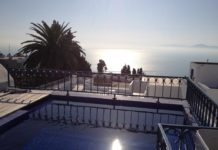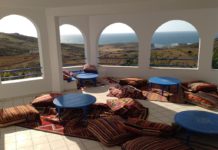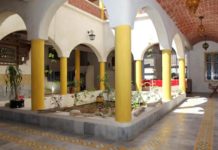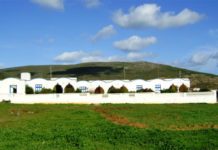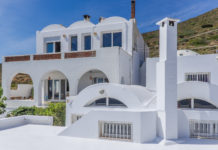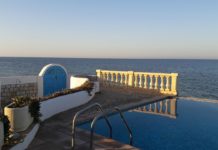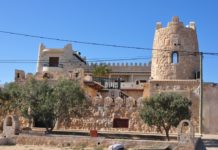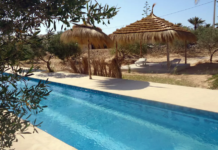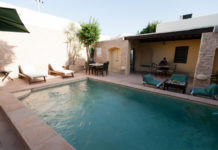If you only plan to stay in big towns like Zagreb, Split, or Dubrovnik, you’ll probably be better off without a car. Intercity buses are a convenient, frequent, fast, and cheap way to go from one town to another. Once in the town, you can use public transport to move around, or you can simply explore a town on foot.
Additionally, Is there a metro in Split Croatia? The new Split metro railway was launched in June 2019 and connects the municipal rail station in Kopilica with the ferry terminal in downtown Split. Tickets for the metro are valid for 75 minutes (fare starts at Kn11) and trains will run every 20 minutes.
Is driving in Croatia easy? Driving in Croatia is relatively easy as roads – including the motorway system – are of a very good standard. Since Croatia gained independence in 1991, there have been vast improvements to the country’s infrastructure (with many of the motorways built since then).
Subsequently, Can you drive in Croatia with US license? A U.S. driver’s license is sufficient to drive in Croatia. This arrangement is only acceptable for the first twelve months of driving in Croatia, after which all drivers must obtain an Croatian license.
FAQ
Can you take a hire car from Croatia to Slovenia?
Which car rental companies allow cross-border in Croatia? You are allowed to drive a rental car into Slovenia if you pick up in Croatia from these car rental companies: Alamo, Thrifty, Avis, SIXT, Europcar, National, Dollar, and Enterprise.
How do I get from Split airport to city Centre? After landing at Split Airport (SPU) you can catch the shuttle bus to the city centre of Split as you exit the airport’s arrival terminal. The shuttle bus takes around 30 minutes to get to Split’s city centre main bus station.
How do you get from Split to Dubrovnik? The best way to get from Split to Dubrovnik without a car is to bus via Dubrovnik – Gruz 2 which takes 4h 11m and costs 95 kn – 230 kn. How long does it take to get from Split to Dubrovnik? It takes approximately 4h 11m to get from Split to Dubrovnik, including transfers.
Are there buses in Split? Public transport in Split is organised by Promet Split buses. There are day bus lines 1 through 18, 21 and 22, that run from 05:00 to 23:00, and three night lines (23,39, and 40) running Fridays and Saturdays only. … Split is covered by one zone, so a ticket is good for one trip anywhere in the city.
What is Croatia famous food?
- Istrian stew (Jota)
- Pašta fažol – bean stew with small pasta.
- Game Čobanac (Shepherd’s Stew)
- Feines Venison goulash with prunes.
- Hunter’s stew.
- Wine goulash.
- Sauerkraut stew.
- Zelena menestra – traditional cabbage and meat dish – Dubrovnik and surrounding area.
Is Croatia left hand drive? Croatian Driving Rules and Regulations
Drive on the right hand side of the road and over take on the left. Seat belts are mandatory for all occupants of the vehicle. Children under 12 must not sit in the front seat.
Is Croatia safe?
Statistically, Croatia is one of the safest countries in the world. The stats don’t lie: Croatia is the 19th-safest country in the world! That means that Croatia is statistically safer than both the UK and the US. The only safety issues you’re likely to encounter will involve pickpockets and scammers.
What is the speed limit in Croatia? Speed Limits in Croatia
| In built-up areas | 50 km/h (31 mph) |
|---|---|
| Outside built-up areas | 80 km/h (50 mph) |
| Motorways | 130 km/h (81 mph) |
Is it safe to drive through Slovenia?
Yes, driving in Slovenia is generally very safe and trouble-free. The roads are in excellent condition and well-signposted, while traffic outside cities is light. Slovenia is a mountainous country, which means the roads are often narrow and winding, so be careful if you’re driving in the countryside.
Can I rent a car in Italy and return it in Croatia?
You may drive within EU, Switzerland, Lichtenstein, Vatican, San Marino, Monaco, Norway,Croatia, Bosnia, Serbia, Montenegro and Macedonia for free. …
Can I enter Slovenia with Croatia visa? Slovenia is in the Schengen Area, which means that, in general, there are no checks at the border crossings with Italy, Austria and Hungary. To enter Slovenia from Croatia, it is sufficient to have a passport or an identity document, if the visit does not last more than three months.
How much is bus from Split to airport? Promet Split operates a bus from Split to Split Airport every 30 minutes. Tickets cost 15 kn – 17 kn and the journey takes 40 min.
Does Split have Uber?
Uber is available at Split Airport, so you can enjoy a convenient and comfortable ride to wherever you need to go. Where is the Uber Split Airport pickup location? Uber pickup locations at airports are subject to change, so to find your Uber Split Airport pickup location, check the Uber app after you request a trip.
Is there Uber in Split? Don’t fret—there is Uber in Croatia
Luckily, the answer is yes—Ubers are available in most major cities like Zagreb, and Dubrovnik, as well as in coastal destinations like Split.
Which is better Split or Dubrovnik?
Dubrovnik is a better travel destination for foodies, and has a better Old Town. Split offers better nightlife, better day trip options, and is generally cheaper than Dubrovnik. Both destinations offer excellent beaches.
Can you drive from Split to Dubrovnik without going through Bosnia? Peljesac Bridge – No More Need To Go Through Bosnia
The construction of the Peljesac Bridge has commenced, and once complete, it will allow vehicles to freely drive from Split to Dubrovnik without going through the pesky border crossings.
How much is a bus from Split to Dubrovnik?
The bus price between Split and Dubrovnik is on average $16 (€14) if you are looking to purchase your tickets for this journey in the next 7 days.
What is a typical Croatian breakfast? A ‘traditional’ breakfast in continental Croatia would typically consist of polenta and cornbread with lard and a sprinkling of paprika and a strong coffee.
Do they speak English in Croatia?
Do Croatians Speak English? The majority of Croatians speak at least one other language. According to a recent poll, some 80% of Croatians are multilingual and, of that group, 81% are English-speakers. The next most popular language is German at 49% followed by Italian at 24%.
Don’t forget to share this post !
